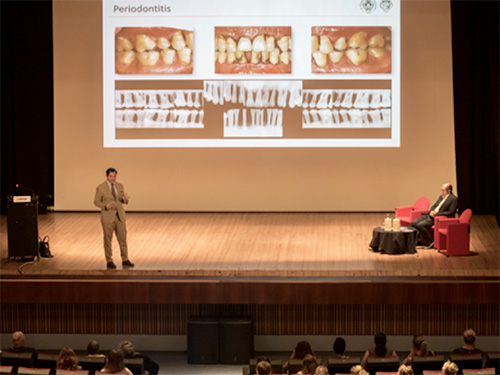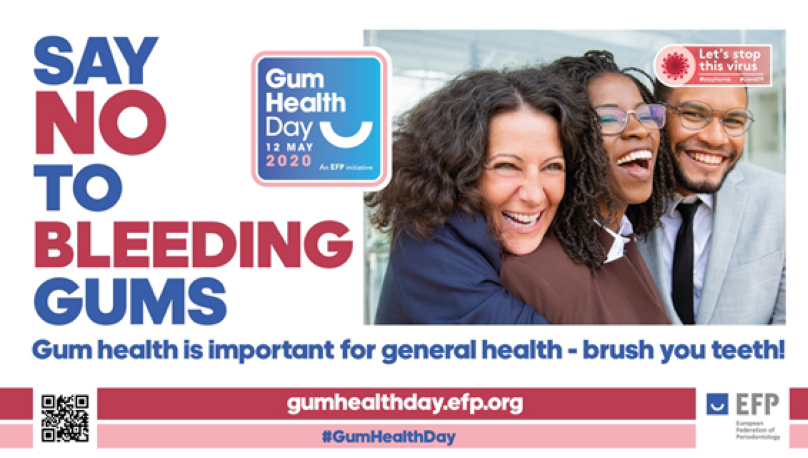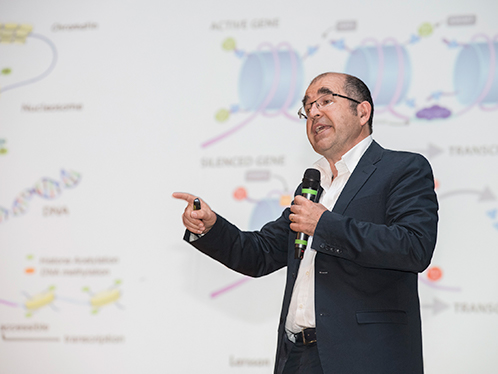Exploring Communication - July 02, 2020
Since COVID-19 has spread throughout the world, dental clinics and dental professionals have been forced to adjust their way of clinical practice. These adjustments have ranged from closing clinical settings for a prolonged period and returning to work with revised PPE measures. This has resulted in a void of patients accessing dental care and resulted in an estimated 1.3 million missed dental appointments alone in England from March 2020 – May 2020, a period of 6 weeks. This insight alone is only a very minute proportion of how many dental appointments have been missed during this time globally (Independent Practice Owners UK, 2020).
Due to the increased PPE requirements now in place to protect the patients and the dental profession, a large number of dental professionals are returning to clinics treating a limited number of patients. This will undoubtedly result in a prolonged reduction in the number of patients accessing routine dental care.
It is extensively documented that the dental profession has been treating the most prevalent preventable disease globally, affecting 60-90% of schoolchildren and the vast majority of adults. Dental caries is still a major oral health problem in industrialised countries, yet less frequent and less severe in most African countries.

The burden of oral diseases
“The Global Burden of Disease Study 2017 estimated that oral diseases affect close to 3.5 billion people worldwide, with caries of permanent teeth being the most common condition. Globally, it is estimated that 2.3 billion people suffer from caries of permanent teeth and more than 530 million children suffer from caries of primary teeth.” The distribution and severity of oral diseases varies among different parts of the world and within the same country or region.
The prevalence of oral diseases continues to increase in most low- and middle-income countries, with increasing urbanisation and changes in living conditions. This has been identified to be primarily due to inadequate exposure to fluoride through water and fluoride toothpaste, and poor access to dental services in the community. Successful marketing campaigns supporting the consumption of food and beverages with high sugar content, as well as tobacco and alcohol, have resulted in the consumption of products contributing to oral health conditions and other non-communicable diseases (James et al., 2018).
Severe periodontal disease is the 11th most prevalent disease globally and estimated to affect between 10%-15% of the global population (nearly 800 millions of subjects worldwide). Cancers of the lip and oral cavity is estimated to affect 4 cases, per 100 000 people globally, yet this varies globally and can increase to 20 cases per 100 000 in some pockets of the globe. Social-economic factors contribute to oral cancer. Men and older people are more susceptible to oral cancer (Ferlay et al., 2018). Preventable disease is currently costing the global economy $298 million per year, accounting for 4.6% of the total expenditure on health worldwide (James et al., 2018). Imagine what these figures have the potential of rising to since the outbreak of the COVID-19 pandemic if so many patients missed their routine dental treatment.
Without overlooking great achievements in oral health, dental caries and periodontal diseases have historically been considered the most important global oral health burdens, and it is a public health concern that global statistics remain to be significant particularly among under-privileged groups in developed and developing countries.
With a dramatic reduction in access to dental care from either clinics being shut or the new revised PPE regulations, it seems an essential requirement for the dental profession to make further efforts to reach out to the public via a less conventional non-clinical setting. Aside from the physical factor that the clinics have been shut, it is essential not to overlook the challenges the patients may have to overcome newly established barriers to access a dental setting, ranging from anxiety to apprehension and the impact on the dental profession as we strive to overcome future challenges that may evolve. The COVID-19 pandemic crisis gives us the opportunity to re-assess new ways of working in the future.
What is Oral Health Promotion?
‘Oral Health promotion goes beyond a health care setting and combines diverse complementary approaches into legislation, fiscal measures, taxation and an organisational change that endeavours to create supportive environments and strengthens community action in setting priorities and making decisions, planning strategies and achieving them to better oral health’ (World Health Organisation, 2020)
Dental health education has traditionally been an emphasis, either with individuals or groups, focussing on imparting knowledge. It is accepted that the acquisition of knowledge alone does not necessarily result in behaviour change.
What is the objective of Oral Health Promotion?
The aim is to encourage people to improve their oral hygiene and use of fluoride to reduce their consumption of sugary food and drinks, alcohol and tobacco and so improve their general, as well as their oral health. This will reduce their risk of caries, periodontitis and oral cancer.

What settings can oral health promotion take place?
Oral health promotion is delivered in a variety of ‘settings’ or locations including General Dental Practice, Community Dental Practice, General Medical Practice, Pharmacies, Schools, Pre-five establishments, Workplaces, General Public, Community and Voluntary Sectors.
A key theme has been that of pre-fives oral health promotion. Currently, efforts are focusing on increasing the registration of infants and toddlers with the General Dental Service, as early dental attendance provides an opportunity to impart appropriate preventive advice to parents and carers. Use of other professionals such as health visitors to detect and stream vulnerable children towards dental care are highlighted. As with the pre-fives oral health promotion, additional measures have the opportunity to be explored focusing on the preventative advice for periodontal patients. There is scope for further multi-professional input in settings such as hospitals and general medical practice, particularly concerning vulnerable patients such as older adults and medically compromised children.
Within general dental practice, there are funding issues relating to the provision of preventive advice and services. The conflict between a traditional fee for the item of service, restorative treatment philosophy and a capitation-based preventive approach has not been adequately resolved. This is an area that has the potential to be explored further, with an emphasis placed on the preventative advice and services.
The opportunities for settings for oral health promotion is vast, ranging from present anything from content targeting the home, leisure, classroom or work setting. It is the most creative, cost-effective, way of improving oral health and in turn the quality of life. It has been identified that dental leadership is required for us to overcome oral health inequalities around the world further.
‘Leadership generally entails sustaining, improving, or changing strategic directions within small or large, simple or complex, organisations’. (Hebbal et al., 2012) Leadership requires making choices based upon plausible alternatives and is reliant on motivating people and bringing them along, and coordinating human and financial resources to achieve a common goal. In recent years, there has been increasing interest in developing dentistry’s future leaders as a result there are a growing number of leadership development programs created for the dental profession. The dental profession is now being encouraged to not only look into oral health matters but take an active role in other issues where the health of the population is at risk. Given the current realities in the healthcare industry, dentistry faces the challenge of assuming a leadership role in meeting the demands and expectations of these changing systems (Hebbal et al., 2012) Developing leadership and advocacy within the dental profession will lead to improved oral health understanding among the global population and the opportunities for expanding oral health promotion.
What has been done so far and what is the evidence?
Throughout the world, there is an abundance of oral health promotional projects that have been in existence for many years, some with data and some without, yet the key objective is to evaluate the impact of each oral health promotional projects.
Oral hygiene instructions to improve oral health can be effective with the implementation of psychological behaviour change models as the basis of the intervention. Education and building on knowledge alone has not proven to be as effective if not combined with psychological behaviour change models. Leaflets and written material are effective in promoting patients’ knowledge, but there is no evidence that leaflets are effective for changing people’s behaviour.
It is also accepted that there are existing barriers supporting successful oral health promotion in the clinical setting, and the patient's motivation is impacted by the dental professional's communication skills. Outside of a clinical setting, it would be apparent that the nature of the delivery of the oral health promotional message can act as a barrier or facilitator in the effectiveness. The quality of life rather than disease outcomes should be the focus. It is evident that psychology of behaviour change is the key to oral health promotion and teaching oral health professionals about health psychology would make oral health promotion in the dental surgery more effective and potentially out of the clinical setting reaching a wider audience.

What could the opportunities for the future be in oral health promotion in your country or elsewhere in the world, that could result in a great reach to a wider audience with a greater impact?
Opportunities moving forward include expanding our ways of communicating with patients broadening our mindset to reach those with an identified need, or who have missed out on dental care during COVID-19 and a wider audience incorporating phycological and behavioural models in varying settings.
Leadership development programs should be explored as a way to enhance the dental professions ability to lead on effective oral health promotional activities.
It may also be a time to collaborate and partner with like-minded colleagues who specialise in the relative field to expand on or develop initiatives that are the psychology of behaviour change lead programs. Identified to be key to oral health promotion.
There is a logical progression from the realisation of the problem, to a decision on the intervention, formulation of objectives and goals, to the application of an appropriate evaluation and analysis on the effectiveness of the oral health promotion activity.
Now is an opportunity more than ever to create content on oral health promotion, to be incorporated into and extending wider than general dental practice.
Literature and suggested reads:
Ferlay, J., Ervik, M., Lam, F., Colombet, M., Mery, L., Piñeros, M., Znaor, A., Soerjomataram, I., & Bray, F. (2018). Cancer Today (powered by GLOBOCAN 2018). IARC Publications. https://publications.iarc.fr/Databases/Iarc-Cancerbases/Cancer-Today-Powered-By-GLOBOCAN-2018--2018
Hebbal, M., Ankola, A., Murugaboopathy, V., Patel, S., Patel, N., & Parkar, N. (2012). Do Dentists’ Require Leadership Qualities? Canadian Medical Education Journal, 3(1), e80–e81. https://www.ncbi.nlm.nih.gov/pmc/articles/PMC4563638/
Independent Practice Owners UK. (2020). Protocol. To allow dental practices to reopen. Independant Practice Owners UK. https://www.surreyldc.org.uk/files/blog/2020/covid19/11_May20_Protocol_to_get_back_to_work_Pandora_Dental_and_the_IndepenDent_Practice_Owners_UK_110520_v2.pdf
James, S. L., Abate, D., Abate, K. H., Abay, S. M., Abbafati, C., Abbasi, N., Abbastabar, H., Abd-Allah, F., Abdela, J., Abdelalim, A., Abdollahpour, I., Abdulkader, R. S., Abebe, Z., Abera, S. F., Abil, O. Z., Abraha, H. N., Abu-Raddad, L. J., Abu-Rmeileh, N. M. E., Accrombessi, M. M. K., … Murray, C. J. L. (2018). Global, regional, and national incidence, prevalence, and years lived with disability for 354 diseases and injuries for 195 countries and territories, 1990–2017: A systematic analysis for the Global Burden of Disease Study 2017. The Lancet, 392(10159), 1789–1858. https://pubmed.ncbi.nlm.nih.gov/30496104/
World Health Organisation. (2020). Health promotion and oral health. Oral Health. https://www.who.int/news-room/fact-sheets/detail/oral-health
Anderson, C. A. (1996). Leaders and leadership: who are they and what is it? Nurse Outlook, 44(4), 163. https://pubmed.ncbi.nlm.nih.gov/8871996/
